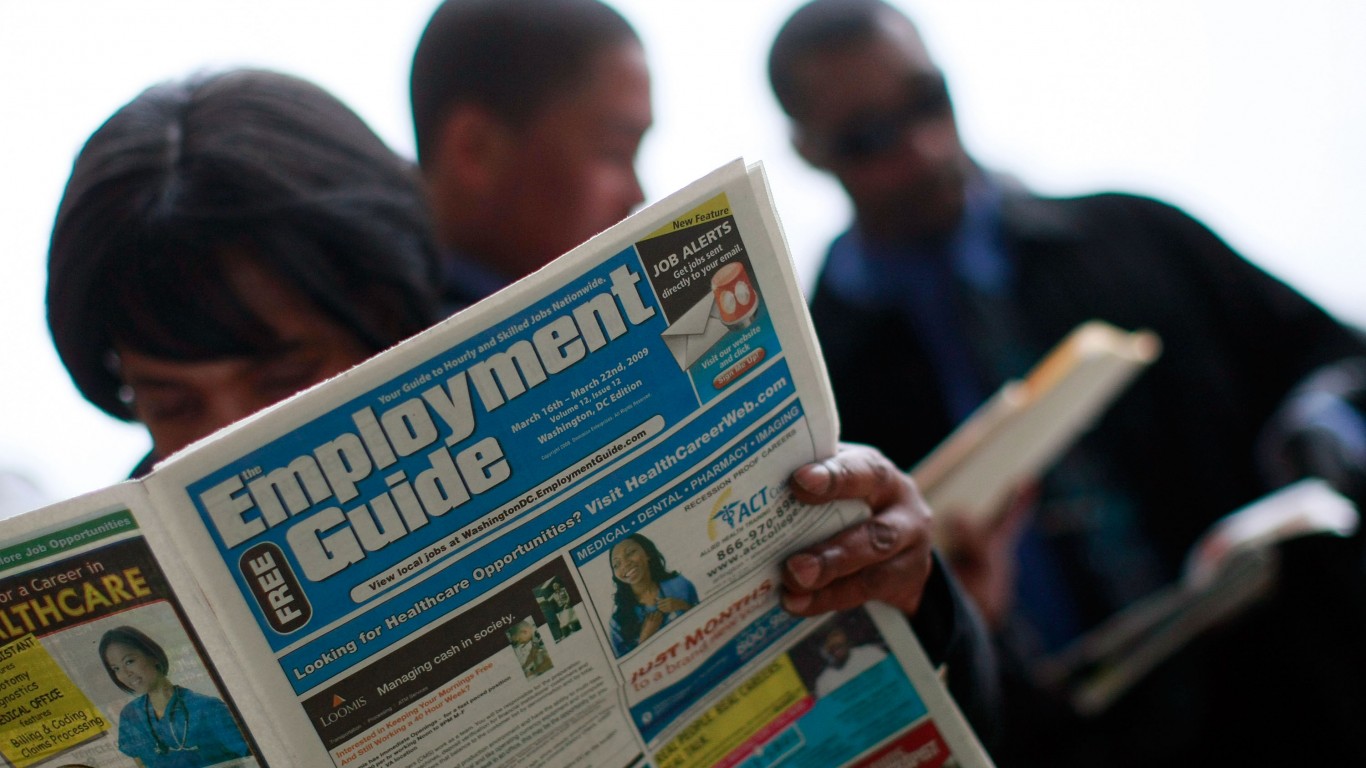
Thursday will mark a crucial day for just how much, or how little, the U.S. economy is growing. The initial first-quarter gross domestic product (GDP) estimate from the U.S. Department of Commerce will be released at 8:30 a.m. Eastern Time. The fourth-quarter GDP was a weak 1.4% growth, and the first quarter is expected to be even weaker.
Bloomberg has its consensus estimate at 0.7%, with the Econoday range from economists of as low as only 0.1% up to as high as 1.1%. Dow Jones (Wall Street Journal) also has a 0.7% consensus estimate.
If the consensus estimate is only 0.7%, this would mark the lowest growth reading since a mere 0.6% gain in the first quarter of 2016. It also underpins the argument that this is the weakest post-recession recovery of our lifetimes.
Then there is the GDP price index, which Bloomberg shows with a 0.5% gain expected, with an Econoday range of 0.4% to 1.1%. Dow Jones has its consensus estimate on the price index at a gain of 0.6%. The fourth quarter of 2015 had a price gain of 0.9%.
What also should stand out as an issue for the first quarter is that 2016 was not a first quarter marred by severe weather. That will make the unknowns less of an impact, or so the theory goes.
Another issue that is making the quarter hard to judge is that the weakness and negativity of the first six to seven weeks of 2016 started to recover in March, only to weaken a bit in the more recent April readings. This all plays into a quagmire for economists: if GDP managed to tick up above estimates, then perhaps the impact was short lived.
One thing that is not in the cards is if GDP were to come out handily under expectations — or even negative. Consumer spending is roughly two-thirds of GDP through time, but the January and February price readings, particularly around commodity goods and energy, was holding back the total dollars spent. Those savings were also landing in spending and debt payments rather than instantly going back into the economy.
Another wild card is the level of residential investment. This has been strong, but Bloomberg noted that it may slow. Bloomberg also warned that inventories likely will pull GDP lower as businesses were destocking after the fourth-quarter GDP was revised higher initially due to inventory building up.
Then there is that issue of international trade and the dollar strength abating. The 2015 of a strengthening dollar has reversed, even as negative rates are present in Europe and Japan. It turns out that a slower-to-tighten U.S. Federal Reserve has taken away much of the dollar’s strength.
All of this will play into the Federal Open Market Committee (FOMC) decision on interest rates, which is due around 2:00 p.m. Eastern Time on Wednesday. It is important to know that the FOMC members will in fact have an advance look at the GDP report, perhaps in general terms, rather than in exact detail, down to the last penny.
Now keep in mind what 2016 is looking like versus 2015. Here is the March 25 release data summarized for the full-year 2015. Real GDP increased 2.4% in 2015, the same gain that was seen in 2014. The 2015 increase in real GDP was primarily from positive contributions from personal consumption expenditures, nonresidential fixed investment, residential fixed investment, private inventory investment, exports and state and local government spending. Imports, which act as a subtraction in the calculation of GDP, increased in 2015.
The 2015 GDP price index was up by 0.4%, compared with an increase of 1.5% in 2014. Current-dollar GDP rose by 3.5%, or $598.9 billion, in 2015 to a level of $17.947 trillion. This compared to a 4.1% gain in 2014, which was a gain of $684.9 billion for the prior year.
Real GDP rose 2.0% in 2015, versus a 2.5% gain in 2014. The price index for gross domestic purchases rose by 0.4% in 2015.
Now consider one last issue here. The National Debt Clock was last seen at $19.258 trillion, and growing, and growing and growing …
The Average American Is Losing Their Savings Every Day (Sponsor)
If you’re like many Americans and keep your money ‘safe’ in a checking or savings account, think again. The average yield on a savings account is a paltry .4% today, and inflation is much higher. Checking accounts are even worse.
Every day you don’t move to a high-yield savings account that beats inflation, you lose more and more value.
But there is good news. To win qualified customers, some accounts are paying 9-10x this national average. That’s an incredible way to keep your money safe, and get paid at the same time. Our top pick for high yield savings accounts includes other one time cash bonuses, and is FDIC insured.
Click here to see how much more you could be earning on your savings today. It takes just a few minutes and your money could be working for you.
Thank you for reading! Have some feedback for us?
Contact the 24/7 Wall St. editorial team.


